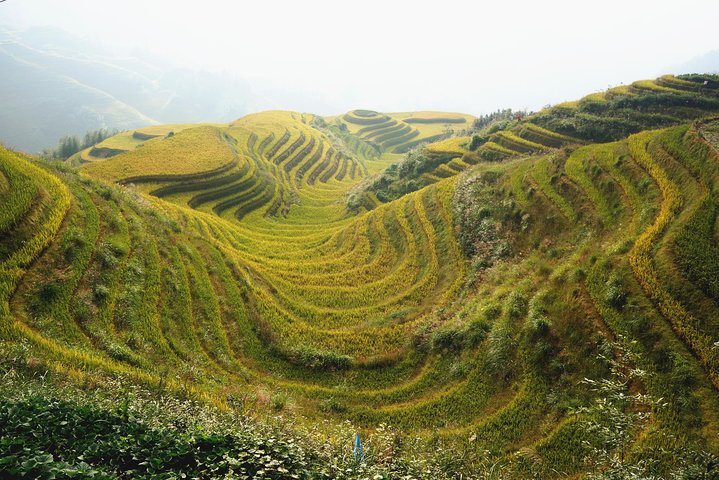Exploring China’s Cultural Heart: A 7-Day Journey Through Guilin, Xi’an, and Beijing
Embark on a captivating journey through China’s cultural and historic cities, from the natural wonders of Guilin to the imperial past of Xi’an and the vibrant heart of Beijing. Discover the stories and traditions that make each destination unique.
A Journey Through Guilin’s Natural Wonders
The journey began in Guilin, a city renowned for its stunning natural landscapes. As I embarked on the Li River cruise, the serene beauty of the karst mountains enveloped me. The rolling hills and verdant forests seemed to whisper stories of ancient times, and the tranquil villages along the riverbank offered a glimpse into the harmonious life of the locals. The buffet lunch on board was a delightful introduction to the flavors of the region, and as we reached Yangshuo, the view from Xianggong Hill was nothing short of breathtaking. The 180-degree bend of the Li River, framed by the majestic mountains, was a sight that will forever be etched in my memory.
The next day, the exploration of the Reed Flute Cave was a journey into an underground wonderland. The stalagmites and stalactites, illuminated by colorful lights, created a mystical atmosphere. Each formation seemed to tell a story, and the guide’s vivid interpretation added depth to the experience. The visit to the Dragon’s Backbone Rice Terraces was equally mesmerizing. The intricate patterns of the terraces, carved into the mountainside, were a testament to the ingenuity and perseverance of the local Zhuang people. Walking through the village, I felt a deep connection to the land and its people, a theme that resonated throughout the tour.
Xi’an: A Glimpse into China’s Imperial Past
Arriving in Xi’an, the ancient capital of China, I was eager to explore its rich history. The Terracotta Warriors Museum was a highlight, and seeing the life-sized clay soldiers standing in formation was awe-inspiring. Each warrior, with its unique features, seemed to have a story to tell, and the guide’s insights into the history of the Qin Dynasty brought the site to life. The visit to the Small Wild Goose Pagoda and the ancient City Wall offered a deeper understanding of Xi’an’s significance as a cultural and historical hub.
The Muslim Quarter was a vibrant tapestry of sights, sounds, and flavors. The bustling bazaar, with its array of street food and handicrafts, was a feast for the senses. As I wandered through the narrow alleys, I was reminded of the Silk Road’s legacy and the cultural exchanges that have shaped Xi’an over the centuries. The visit to the Hanyangling Mausoleum and the Shaanxi History Museum further enriched my understanding of China’s imperial past, with artifacts and exhibits that spanned thousands of years.
Beijing: The Heart of Modern China
The final leg of the journey took me to Beijing, a city that seamlessly blends the old with the new. Standing in Tiananmen Square, I felt the weight of history, and the visit to the Forbidden City was a step back in time. The grandeur of the imperial palace, with its intricate architecture and vast courtyards, was a testament to the power and influence of the Ming and Qing dynasties.
The hike along the Mutianyu section of the Great Wall was a highlight of the trip. As I walked along the ancient stones, I marveled at the engineering feat and the stories of those who once guarded the wall. The panoramic views of the surrounding mountains were a reminder of the wall’s strategic importance.
The tour concluded with visits to the Temple of Heaven, the Summer Palace, and the Lama Temple, each offering a unique perspective on Beijing’s cultural heritage. The rickshaw ride through the Hutongs and the stroll around Houhai Lake provided a glimpse into the daily life of Beijingers, a fitting end to a journey that celebrated the rich tapestry of China’s history and culture.














































